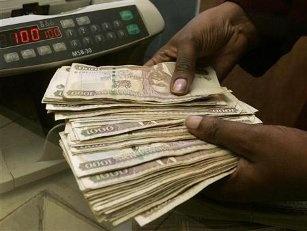The five-nation East African Community, comprising Burundi, Kenya, Rwanda, Tanzania and Uganda, has ambitious plans of establishing a Eurozone’s style Monetary Union with a single currency by next year; how realistic is this goal?
What exactly do Economic and Monetary Union (EMU) mean? To an economist, a monetary union signifies a bloc where one currency prevails, and where a single institution, like the European Central Bank (ECB), or the US Federal Reserve System is responsible for controlling the area’s money stock and interest rates policy. This however, can be distinguished from two other forms of “monetary integration”. The first involves the fixing of exchange rates and the existence of financing facilities to ease money and trade adjustments, and is referred to as a “currency union”. The second form is referred to as “financial integration”, and it involves free capital mobility and the unification of financial institutions and markets to facilitate such freedom.
Harmonisation
The formation of an East African Monetary Union (EAMU) requires uppermost harmonisation of the exchange rate mechanism and fiscal-and-monetary policies, as well as similar economic cycles within the member-countries. A centralised Central Bank commanding impeccable anti-inflationary credentials would be responsible for overall policy coordination and preserving regional financial stability in post EAMU era. The economic tests are based on the European Union’s Maastricht Treaty criteria for currency convergence. One of the main criteria include reducing the inflation rate to 5 percent region-wide.
Commissioned by the EAC Secretariat, the Frankfurt-based ECB, conjunction with the EAC central banks completed in January 2010 a study on preparedness for launching an EMU: the legal, institutional framework and the monetary union’s structure, including for the East African Monetary Institute, which will precede creation of an East African Central Bank (EACB), with a proposed US$500mn capital; a mechanism for monitoring and enforecement of the macroeconomic convergence criteria; and a protocol for negotiations. Usage of the planned EAC unit in the settlement of payments is also under consideration.
Convertible currencies
In January 2011, a High Level Task Force (HLTF) was created to drive the project forward. The Ugandan Minister for East African Affairs, Eriya Kategaya, explained: “The monetary union is an ongoing process and the paperwork is being processed. Our target is to agree and sign the final document by 2012. A common currency is crucial in order to smooth trade flows. We are in the process of creating one regional economy that will operate seamlessly by facilitating faster trade within the community and eliminating foreign exchange and interest rate risks because we shall have one central bank.”
The EAC central banks all operate “de jure” flexible exchange rate regimes, target reserve money and use similar domestic money market instruments for liquidity management. Moreover, the regional currencies are convertible and some progress has been made in harmonising banking regulations. The authorities are taking steps to support a more integrated capital market. On the fiscal side, the Finance Ministers conduct pre-and post-budget consultations and there is regular sharing of budget information among the six Ministries.
The harmonisation of national regulatory frameworks, now under way, should be accelerated to facilitate the emergence of regional financial instruments. Developed government debt markets could improve the efficiency of monetary policy and serve as a benchmark ‘yield curve’ for the private sector, and thus facilitating the pricing of financial products. The local currency debt market of the West African Economic and Monetary Union (WAEMU) is a good example of a regional approach to bond market development.
Potential commercial gains
The most important direct benefits of EMU are likely to accrue through a reduction in cross-border transactions costs and exchange rate uncertainty. Thus, greater currency stability should simplify the business decision-making process, whereas exchange risks discourage cross-border investment. The longer term a business project, the more its planning is affected by exchange risk.
A single monetary zone can result in better fiscal control mechanisms. The revenues from “seignorage” – namely resorting to the printing press to finance budget deficits thereby causing unexpected inflation are no longer an available policy option. Fiscal prudence enhances the credibility of government’s policies. Other potential long-term gains dervive from increases in FDI and intra-regional trade thanks to a large free trade bloc and a stable macro framework, which underpins higher output growth and job creation in member states. In addition, a single currency would improve monetary co-operation within the EAC banking sectors, hence leading to more efficient payments and clearing systems.
Piped dream?
Although the EAMU goal is achievable, the sovereign debt crises in the eurozone (notably Greece, Ireland and Portugal) underscore the need for an effective monetary and fiscal framework. The current deadline (2012) appears overly ambitious and is unlikely to happen until 2016/17, at the earliest. Professor Tumusiime-Mutebile, the Bank of Uganda (BoU) governor, too, cautioned: “Establishing a monetary union in East Africa will be a difficult and risky task. It will require an enormous amount of work to reform institutions, change legislation and revise macroeconomic policies. It is a long-term undertaking, whose benefits will be realised over many decades.”
The history of the European Union shows that achieving the final goal of a single currency (the euro) took many years and structural adjustments within the member countries. Honest Ngowi, Tanzanian chief advisor on the EAC agrees by saying forming a monetary union is a “process not an event and should be treated as such. The basic building blocks should be erected progressively and one day, even if it is after many years, the union will be in place.”
Moin Siddiqi




